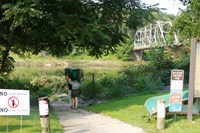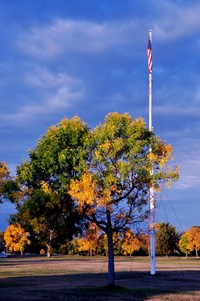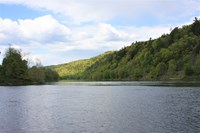- Mount Rainier National Park (16)
- Charles Young Buffalo Soldiers National Monument (11)
- Aleutian Islands World War II National Historic Area (8)
- Upper Delaware Scenic & Recreational River (6)
- Acadia National Park (5)
- Yellowstone National Park (5)
- Cape Hatteras National Seashore (4)
- Fort Scott National Historic Site (4)
- Independence National Historical Park (4)
- Show More ...
- National Register of Historic Places Program (3)
- Harpers Ferry Center (2)
- National Heritage Areas Program (2)
- National Historic Landmarks Program (2)
- US Park Police (2)
- Cultural Resources Program - Region 11 (1)
- Eastern Rivers and Mountains Inventory & Monitoring Network (1)
- Geologic Resources Division (1)
- Law Enforcement, Security, and Emergency Services (1)
- Show More ...
Showing 149 results for Patrol ...
Laughingwater Creek Trailhead
Highland River Access
Charles Robinson
Skinners Falls River Access
- Type: Place

The Skinners Falls River Access is a public river access for the Delaware River located near Milanville, PA adjacent to the Skinners Falls Bridge. It is owned by the New York Department of Environmental Conservation. This is a canoe/kayak access only. Please note the Skinners Falls Bridge is closed to all traffic at this time.
Liberators' Memorial
Damascus River Access
Darbytown River Access
- Type: Place

The Darbytown River Access is a public river access for the Delaware River located near Narrowsburg, NY across the river in Darbytown, PA. It is owned by the Pennsylvania Fish and Boat Commission. This access is open for canoes, kayaks, and other non-motorized boats. Motorized boats can be launched at this access.
Zane Grey (Lackawaxen) River Access
Huckleberry Creek Patrol Cabin
Butt-Millet Memorial Fountain
- Type: Place

This fountain memorializes Archibald Butt and Francis Millet, two men who died in the sinking of the RMS Titanic. Butt and Millet were most likely involved in a romantic relationship, but because of the intense social stigma around homosexuality during their life there is no explicit confirmation of the nature of their relationship. This memorial, planned by their friends and approved by Congress, honors the two of them together, inseparable in memory as in life.
Calvin Charles Rice, Jr.
Permanent Indian Frontier
Dragoon Expeditions in the 1840s
- Type: Article

Fort Scott was established to contain Westward Expansion, yet many actions soldiers took had the opposite effect. From 1843-45, dragoons went out each summer to patrol the Oregon and Santa Fe Trails to make them safe for travel. They met with Native American tribes, had a showdown with Texans, and made it as far west as South Pass in Wyoming where they spent a few tense days near Oregon Territory in the event of a war with Great Britain.
Mystic Lake Patrol Cabin
Original McKinley Park Headquarters
- Type: Place

The park’s first ranger, Harry Karstens, arrived in 1921. After a summer of meeting people, and a long patrol through the park, Karstens began clearing land for his headquarters on the northwest bank of Riley Creek. The location offered an ideal place to monitor people using the trail leading west to the park, but proved to be incredibly cold in winter—which led to its move in 1925, to a hillside offering much milder winter temps!
Full Fledged Rebellion-War on the Border
- Type: Article

While no battles were fought here, Fort Scott served as a critical base of support and logistics for Union soldiers fighting in the area. Fort Scott was the focal point for one of the most diverse assemblages of Civil War soldiers who played a vital role in patrolling the Kansas Missouri border and the trans-Mississippi West.
Adolescence-Soldiers on the Frontier
- Type: Article

Have you ever had your job description change? Soldiers at Fort Scott were sent here to serve as a "border patrol" to keep Missouri settlers and Native American tribes separated. However, many of the events in which they became involved in the 1840s had the opposite effect. Instead of containing westward expansion, soldiers at Fort Scott became agents of the largest expansion of territory in US history.
PA Gradual Abolition of Slavery Act - March 1, 1780
- Type: Article

In 1780 the Pennsylvania Assembly passed the Act for the Gradual Abolition of Slavery into law. It was the first of several legislative enactments to abolish slavery in the states between 1780 and 1804. The act stated, “every Negro and Mulatto child born within the state after the passing of the Act would be free upon reaching age twenty-eight.”












